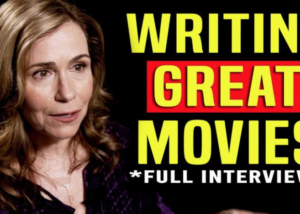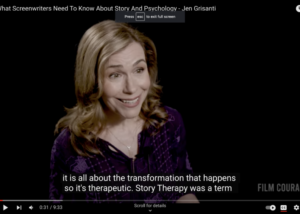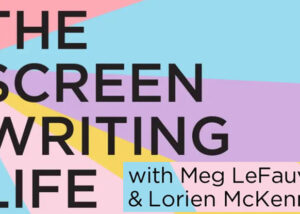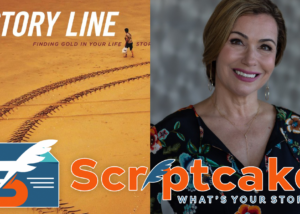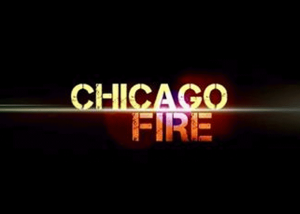How do you develop an idea into a script? What is the evolution process of an idea? After 20 years of working with writers at every level in the story development capacity, I’ve come up with what I’ve surmised is how the creative process goes during the writing process of a TV pilot script.
1. Idea/Concept Seed
2. Pitch Document Hot Mess
3. Outline Controlled Chaos
4. First Draft Possibility
5. Second Draft Potential
I share this as a way to motivate writers at every level to know that they are not alone in their madness. This seems to be how the evolution of an idea transforms as it goes through the creative process.
Idea/Concept – The first stage is often one of the most challenging for writers. How do you come up with an idea? Do you revert to writing what you know? Or, do you use your imagination and go into a world that you can create from scratch? There is a journey in both. If you write what you know, do not write it from an autobiographical place. This is a mistake. Write from a place of emotional truth and add fiction to it. This is how you get to reveal truth and hide it at the same time through fiction. If you choose to go into a world you don’t know, let your imagination go wild. Think of a concept that will take us into a world or life experience that we don’t know and make us want to know it through your execution. A world or life experience that is in the news or current events will give you an instant audience. For example, think of the shows – Homeland and The Good Wife.
In Homeland, many of us heard about the stories of prisoners of war returning home; however, what we didn’t know is what is it like to be held captive for 8 years and then return home to an existence that went on without you. This is taking the idea of fish out of water to a new level. The fertile ground is what happened in those eight years and how it informs the character of Brody and the choices he makes in the present.
In The Good Wife, we saw all kinds of stories on the news about famous politicians and sports athletes who cheated on their wives. Doing a show that goes into this life experience was a brilliant idea because it takes us deep into this journey and in doing so, makes the millions of people who’ve been betrayed, feel less isolated in their experience. We root for the main character, Alicia, to win her legal cases because we identify with her on an emotional level.
Pitch Document – This is part of the cycle that I take writers through before moving into the outline phase.
The pitch document that I like to use includes: Explanation or definition of the title, Write your series log line, Concept (further explanation), Pilot log line (Your pilot log line is how you go into your series through the A story), Themes for your show, Write a small paragraph for your main characters, Write a paragraph for the Teaser and each Act, Write a paragraph giving an overview of your show, Write a paragraph about the back-story of your central character, Write a paragraph for the first 13 episodes of your series. This could just be a log line for the A story and the B story.
The word that I used to describe this part of the creative process is “hot mess.” Typically, this is what happens during this phase. The concept is all over the place. The intention is still being formulated. The concept is being fleshed out. The writer is trying to find the identity of the show. This formula helps with this process. If the writer is lucky, they are able to master this and move to the next level with the outline. There are very few writers who are able to avoid the “hot mess” part of it and many who languish in this. It is ok. When your idea is meant to move to the next level, it will. Be “in” whatever is your creative process and trust that your idea will evolve when it’s ready.
The formula for the log line that I have writers use is set up of who (create empathy), dilemma, action, goal with a twist of irony.
The formula that I have writers use for their story structure is to start your story with a trigger incident that leads your central character into a dilemma. The choice that they make in the dilemma defines the goal. Then, all of the obstacles, escalating obstacles, “all is lost” moment should connect back to the goal. It is when the goal isn’t clear that story doesn’t work.
Outline – With the outline phase, you are writing a paragraph for each scene in each act and you are adding some dialogue to help bring it to life and set the tone. I’ve seen outlines vary in length. For the one-hour drama, outlines average between 12-17 pages. For a sitcom, the average is 8-10 pages. The more detailed that you are in the outline, the better it will be when you go from this phase into the script phase.
I refer to this part as “controlled chaos.” The reason for this is that the outline forces you think about what your story is about and how you are going to execute it. If you think back to the formula that I gave in the pitch document phase, think about how every scene in every arc has a purpose. It should fall under one of the following headings – trigger incident, dilemma, set up of goal, obstacles, escalating obstacles, “all is lost” moment and resolution. If your scene doesn’t fall under one of these headings, it is not advancing plot.
First Draft – This is often referred to as the “vomit draft”. In this phase, it is all about getting your story on the page, setting up the concept, the structure, the characters and the world. You want to really connect with the idea of just getting your idea out there and then knowing that you will have plenty of time to revise and define.
I refer to this stage in the evolution of an idea as the phase of “possibility.” We begin to see what is working in your idea. As an analyst, I look for many things when I go through a first draft. I look at the strength of the trigger incident and the dilemma. I look for the set up of the goal. I want to feel what the pursuit is and what is at stake if it is not achieved in every scene of the A story. I look at the act breaks. Do they end on an obstacle or a question that leaves the audience wanting to return to get the answer?
Second Draft – You made it! You got through the first four stages of an idea. Now, it’s about applying the notes and making the revisions. In the second draft, you want to fine tune and add touches. What is the theme of your story? This is something that you should have set up in your pitch document phase. In this phase, you want to check your theme. Is it the same? Or, is another theme coming through in a stronger way? Make the appropriate changes and thread throughout if you find that your theme appears to be different than where you started. Can we hear your voice in your scenes? Does your emotional truth appear in one of the reactions from your characters? If not, think about where you can add it. Did you address all of the notes that you received from the first draft? Did you go beyond the note? A common mistake is that many writers just address the place of the note instead of doing the work and threading it throughout.
The intention of taking you through this evolution is to show you that it is a universal process. Your seed has to grow and evolve. Try not to resist the process. Be open to every phase. Know that when the idea is ready, it will move to the next phase. When it does go through the five steps, you are taking a major step toward moving forward with your goal. You can make it happen. Every successful TV show or feature that has succeeded, started as a seed and evolved into something more.

